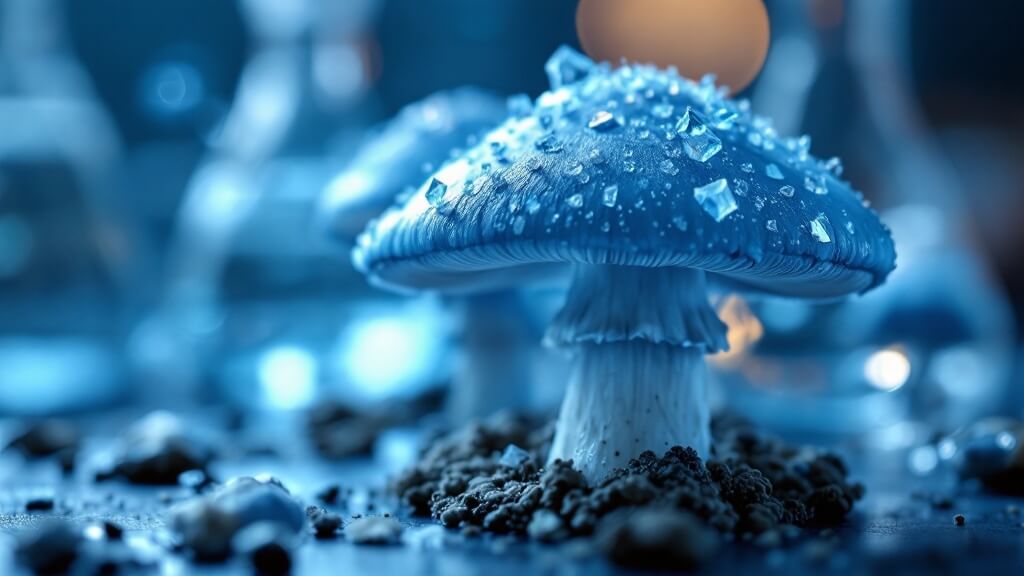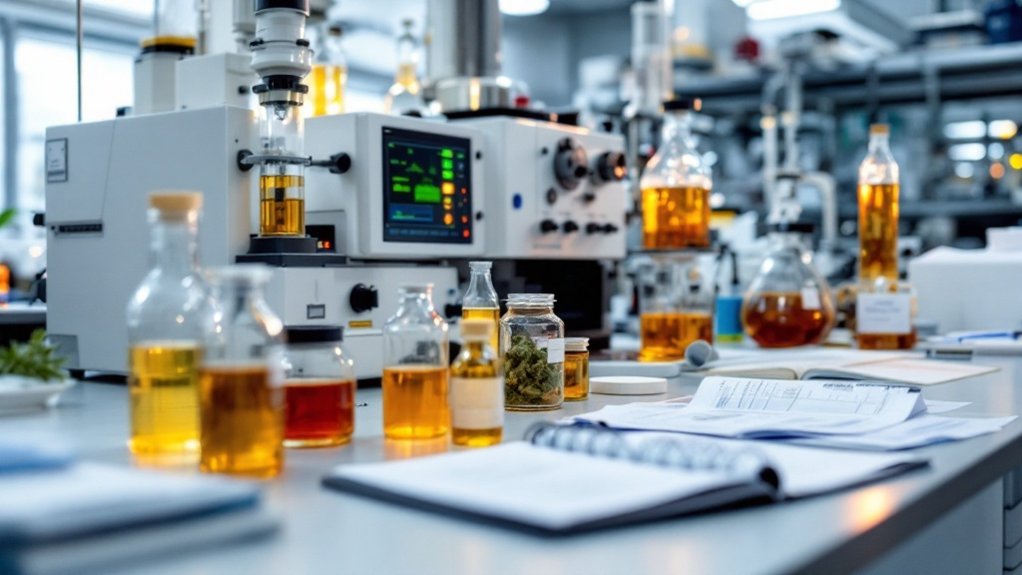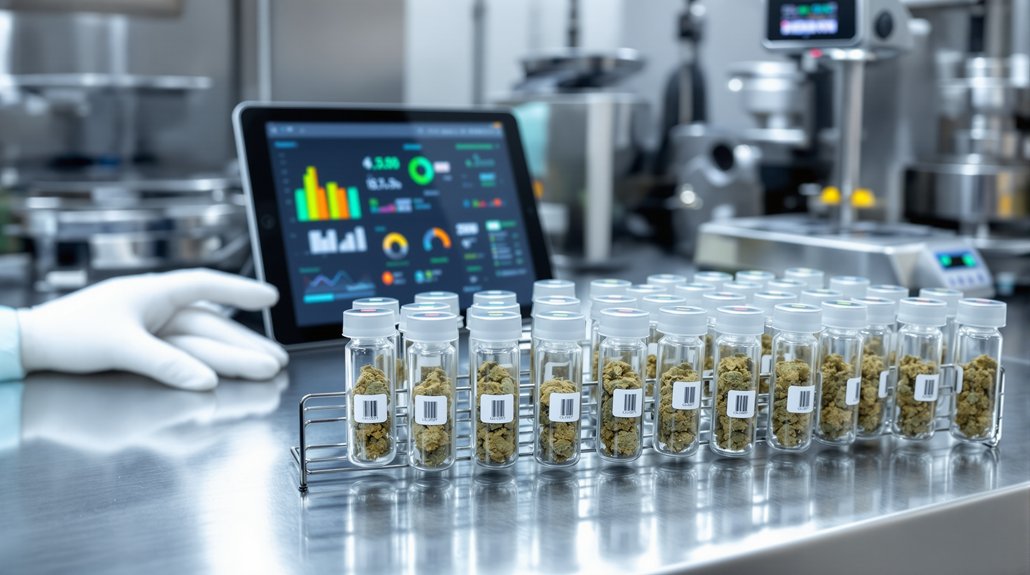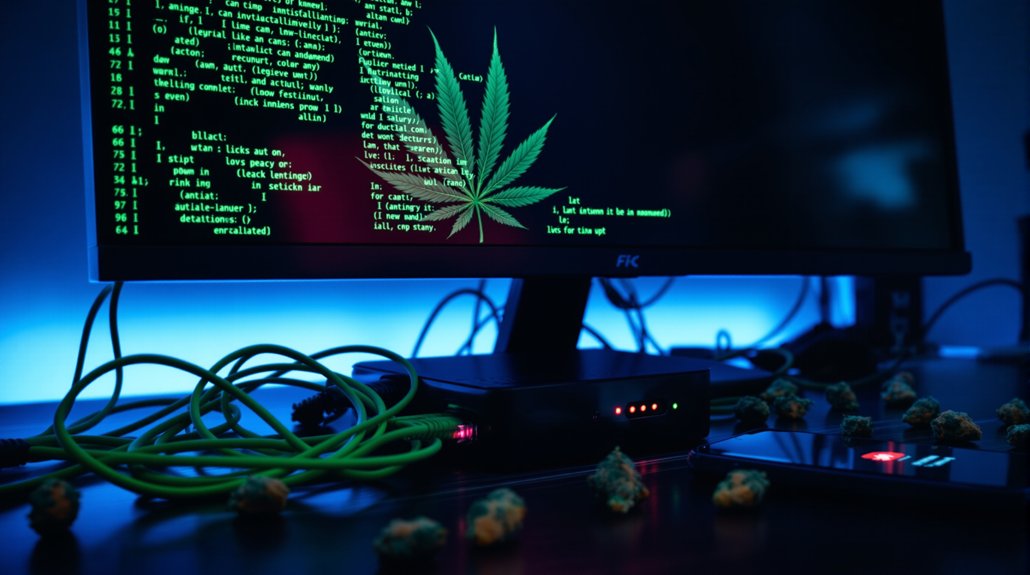Psilocin (4-hydroxy-N,N-dimethyltryptamine) is the active psychedelic compound in “magic mushrooms” with molecular formula C₁₂H₁₆N₂O. It functions as a serotonergic psychedelic by acting as a partial agonist at 5-HT₂A receptors in the brain. Psilocin is produced when its prodrug, psilocybin, undergoes dephosphorylation in the digestive tract and liver. With a half-life of 2-3 hours, it produces altered perception and enhanced introspection effects that peak 60-90 minutes after ingestion. The compound’s fascinating pharmacology reveals much about consciousness and perception.
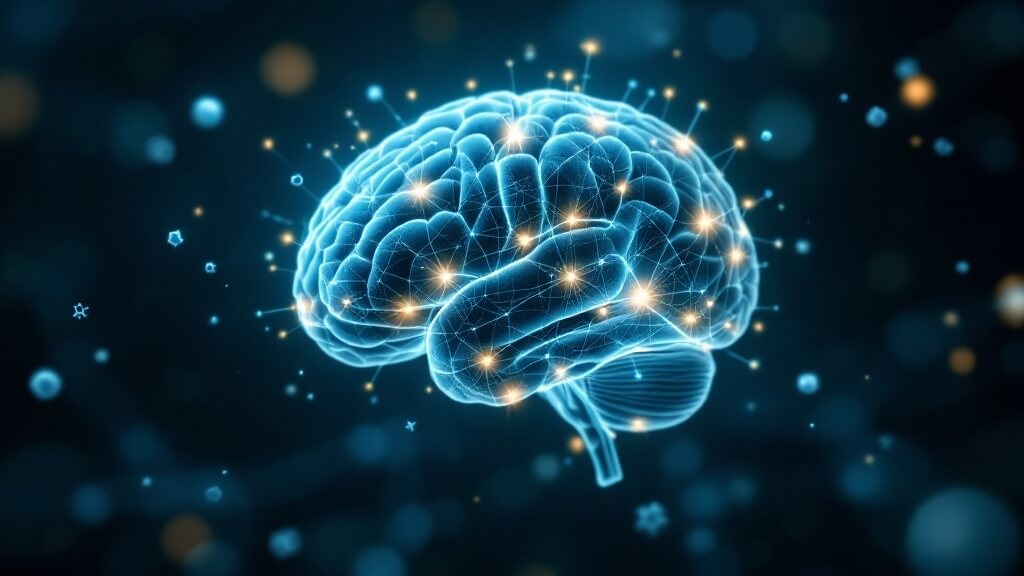
While many associate psychedelic effects with “magic mushrooms” themselves, it is actually psilocin that produces these mind-altering experiences after consumption. Psilocin, scientifically known as 4-hydroxy-N,N-dimethyltryptamine or 4-HO-DMT, belongs to the tryptamine alkaloid class and functions as a serotonergic psychedelic. This compound has structural similarities to the neurotransmitter serotonin, which partially explains its ability to modulate brain function and alter perception.
Chemically, psilocin has the molecular formula C₁₂H₁₆N₂O with a molar mass of 204.27 g/mol. In its pure form, it appears as white crystals with a melting point of 345°F (174.5°C) and water solubility of 4 g/L at 77°F (25°C). The compound is an isomer of bufotenine, differing only in the position of the hydroxyl group within the molecular structure. This seemingly minor structural variation produces considerably different psychoactive properties.
In its crystalline form, psilocin’s precise molecular structure dictates its unique psychoactive profile despite chemical similarity to other tryptamines.
Most naturally occurring psilocin comes from “magic mushrooms,” primarily from genera including Psilocybe and Panaeolus, where it exists alongside its prodrug, psilocybin. When mushrooms are ingested, psilocybin undergoes dephosphorylation—primarily in the digestive tract and liver—converting into psilocin, which can cross the blood-brain barrier. This conversion typically occurs within 20-40 minutes after consumption, explaining the characteristic onset time of mushroom-induced psychedelic experiences.
Pharmacologically, psilocin functions primarily as a partial agonist at the 5-HT₂A serotonin receptors in the brain. It also interacts with 5-HT₁A and 5-HT₂C receptors, contributing to its effects on mood and cognition. Once active in the body, psilocin has a relatively short elimination half-life of approximately 2-3 hours, though subjective effects may last longer. A typical human dosage for experiencing psychedelic effects ranges from 10 to 20mg of the compound. Peak effects occur after 60 to 90 minutes following ingestion, with users often reporting altered perceptions and enhanced introspection.
Psilocin’s physical and chemical properties present challenges for storage and stability. The compound readily oxidizes when exposed to air, light, or alkaline conditions, turning bluish-black as it degrades. This instability explains why psilocin itself is rarely isolated or stored, with the more stable psilocybin being preferred for research purposes.
Legally, psilocin is classified as a controlled substance in most countries worldwide. Regulations typically cover both the natural fungal materials containing the compound and any synthetically produced versions. In some jurisdictions, however, legal status is evolving as research into potential therapeutic applications continues to emerge and expand our understanding of this psychoactive tryptamine.
Frequently Asked Questions
How Does Psilocin Affect Brain Chemistry?
Psilocin primarily affects brain chemistry by activating serotonin 2a receptors, causing significant disruption in brain networks.
This activation reduces the energy needed for state shifts between brain activity patterns, particularly in the association cortex. It temporarily desynchronizes neural communication, increases global state configurability, and alters metabolism in frontal and temporal regions.
These changes persist for weeks after administration, effectively “flattening” the brain’s dynamic landscape and facilitating easier movements between cognitive states.
Can Psilocin Be Legally Prescribed for Therapeutic Purposes?
Currently, psilocin cannot be legally prescribed for therapeutic purposes at the federal level in the United States. It remains classified as a Schedule I controlled substance with no federally recognized medical applications.
However, recent developments suggest potential changes to this status. Some states like New Mexico have implemented their own regulatory frameworks allowing supervised access, while proposed federal legislation seeks to reclassify psilocin to Schedule IV. This would potentially enable prescription under specific medical circumstances with appropriate oversight.
What Are the Long-Term Effects of Regular Psilocin Use?
Regular psilocin use may lead to rapid tolerance development, requiring higher doses for similar effects.
Longitudinal studies suggest potentially enduring changes in personality traits, including increased openness and mindfulness.
While physical addiction is rare, psychological dependence can develop in some individuals.
Research gaps remain significant, as no large-scale, long-term studies have directly assessed regular psilocin use across diverse populations.
Individual responses vary considerably, influenced by mental health history and context of use.
How Is Psilocin Different From Other Psychedelics?
Psilocin differs from other psychedelics primarily through its chemical structure and pharmacological profile.
As a 4-hydroxy-N,N-dimethyltryptamine, it shares the tryptamine backbone with DMT but contains a critical hydroxyl group at position 4.
Unlike DMT, psilocin is orally active without requiring a monoamine oxidase inhibitor.
It also exhibits different metabolic pathways and duration of effects compared to synthetic psychedelics like LSD, while maintaining primary activity at the 5-HT2A receptors characteristic of classical psychedelics.
Can Psilocin Help With Treatment-Resistant Depression?
Clinical trials indicate that psilocin, through psilocybin administration, shows promise for treatment-resistant depression.
A phase 2 study demonstrated that a single 25 mg dose of psilocybin with psychological support produced statistically significant reductions in depressive symptoms compared to placebo. Patients experienced a 19.1-point reduction in MADRS scores, with effects appearing within 8 days and continuing through 6-week follow-up periods.
While generally well-tolerated, phase 3 trials beginning in 2023 are further evaluating efficacy and safety profiles.
